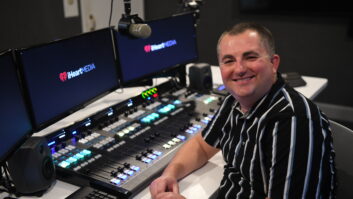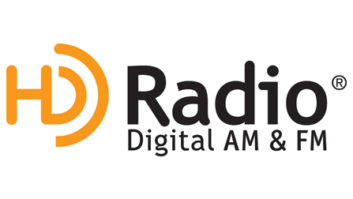More on IBOC
Nov 1, 2000 12:00 PM, BE RADIO STAFF
I have heard informed people suggest that the ability to transmit 5.1 channel surround audio (such as Dolby Digital) could be the value-added feature that could make DAB successful. In sessions at NAB2000 I brought this up to a panel of engineers presenting points of view on IBOC/DAB and the translation of their response amounted to “Huh?, We’re just doing stereo with ancillary data.” This is more evidence that radio broadcast as we know it could be headed the way of the dinosaur with the NAB and the US broadcast engineering community blazing the trail.
I’m sure Skip has thought of 5.1 and if he does not mention it there is a good reason. What am I missing?
Lewis Downey KUER-FM, University of Utah Salt Lake City, Utah
Lewis, I appreciate your comments. Although I’m not sure I agree that 5.1 channel audio would be the killer application for IBOC, but it would certainly make a nice feature. Unfortunately, it’s not technically possible under current IBOC designs. FM IBOC is considering 96kb/s or at most, 128kb/s as a data rate for its audio payload, and AM IBOC will use 48kb/s. The lowest data rate in common use for compressed 5.1-channel audio today is 384kb/s (Dolby AC-3), which is obviously well above the range of possibility for IBOC.
As a reality check, consider that last year CEA suggested 5.1-channel audio (knocked down to 288kb/s) in its elegant but ultimately ill-fated MMBS proposal for reclaimed UHF-TV spectrum. This COFDM-based service was optimized for robust mobile reception, and it required a channel bandwidth of 1.5MHz of clear spectrum for each 5.1-channel audio program plus 64kb/s of aux data. It’s certainly a stretch to think that this kind of service could be squeezed into a 200kHz channel that was still carrying analog FM. That’s not to say that coding techniques can’t eventually improve to this point, but today it’s a pipedream. Of course, if there’s one thing the last few years have taught us in the area of perceptual coding, it’s “Never say never.”
Read on, Skip Pizzi executive editor
I read Skip Pizzi’s comments in What’s wrong with DAB? (September 2000) and must take exception. True, the proposed iBiquity IBOC system is not intended for dual programming of the analog and digital signals. Why would we want to double the number of audio services in each band?
You can hear the major radio groups struggle to find commercially successful formats for all the frequencies they own now. Does radio want to follow the lead of cable TV appealing to splinter audiences?
If the marketplace cries for additional outlets why don’t we have sub-carrier buttons on our FM car radios? Broadcasters don’t need more struggling formats.
Expansion of services will drive IBOC. At the NAB Radio Show I saw a prototype receiver displaying album covers, artist info and banner ads. I heard about interactive links using cellular technology to place orders. These are the quantitative changes IBOC brings to radio. This new revenue source will prompt management to invest in IBOC.
AM IBOC brings another quantitative change to medium wave. AM stations now have the ability to compete with FM for the music formats. Medium and small markets can now have a choice of formats other than rock and country.
Skip lamented that iBiquity brings us the same old song in a digital package. CDs are only a digital version of analog vinyl; we play the same music. PCs are only digital versions of typewriters and manual adding machines; we print the same letters and spreadsheets.
There is a ground swell growing for iDAB. I know of stations delaying replacement of failing equipment in expectation of an IBOC standard. When management of a Christian AM station in North Pole, AK, asks me to come up and talk with them about IBOC, there is interest. I am writing this on a plane flying over the Gulf of Alaska. It looks like 2001 will be the year for IBOC. Very likely we will see IBOC exciters at the spring NAB Convention.
Maybe IBOC is not the final pinnacle for radio. IBOC may well be only another step in the evolution of radio broadcasting, but for now it’s the best technology the local radio broadcaster can put his arms around. How many reading this would rather return to local country bands performing live and to home-grown sermons on the radio?
Walt Lowery District Sales Manager – Radio Harris Corporation Mukilteo, WA
Walt, Thanks for your letter. As always, your comments are thoughtful, heartfelt and articulate. Nevertheless, I remain steadfast in my opinion that broadcasting needs more channels if it is to survive. Quantity has always beaten quality in electronic media transitions. New content draws listeners. Broadcasters need to get over their legacy fixation on high market shares. Moreover, the Internet is making audiences less tolerant of pre-fab, limited-choice content.
Regarding subcarriers, they are very popular in most major markets for foreign language audio services. You don’t see the radios in the stores, but the availability of desired content motivates people to hunt the receivers down. The popularity of Internet and satellite radio will grow because of the new services they carry (including such non-English language and data services). The only players that don’t seem to want more services are existing broadcasters. What does that indicate? Putting private interest ahead of public interest is antithetical in broadcasting. Pride comes before a fall.
I have always agreed with your point that AM radio could be helped by IBOC more than FM, but have you listened to AM IBOC? In some cases it’s better than today’s average analog AM signal, but it certainly doesn’t match today’s FM audio quality. Again, a small, purely qualitative step, which could be lost on most consumers.
You are also quite correct that progress has to be incremental if you want mass audiences to follow. But when a change such as the Internet hits the mass market, it’s a tough act to follow with small, incremental shifts in legacy systems. Your analogies to past developments are off the mark here: The CD wasn’t just a better-sounding LP, and certainly the PC is a lot more than just a digital typewriter or adding machine. That’s like saying the F-16 is an updated Kitty Hawk. Perhaps a counter-metaphor for my view of IBOC is that it takes more to make a passenger jet than putting wings on a bus.
Nobody wants to move backward, but we have to move forward sensibly and efficiently. A change of IBOC’s magnitude is difficult and won’t be taken lightly by broadcasters or the CE industry. Given that level of effort, I just don’t feel that IBOC goes far enough or provide sufficient ROI in either the capital or sweat equity that will be required. Nor will its moderate advances provide sufficient appeal to attract (or retain) audiences in large numbers. If broadcasters are set to make a big change, it had better be worth it. If not, the attempt to become more competitive may ricochet into a major misstep that drags the industry into a steeper decline.
Read on, Skip Pizzi executive editor












